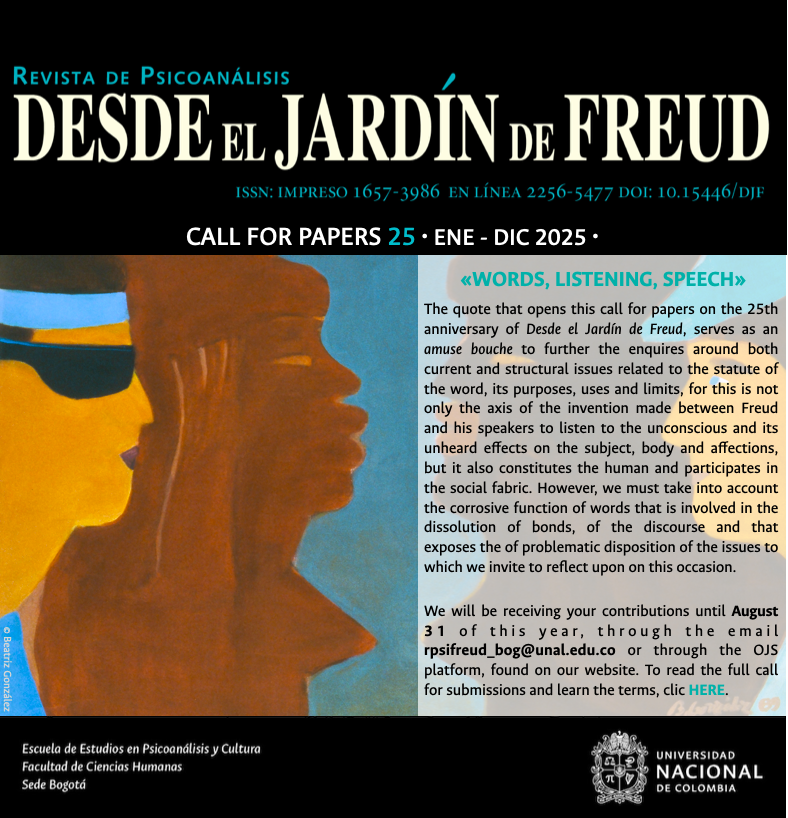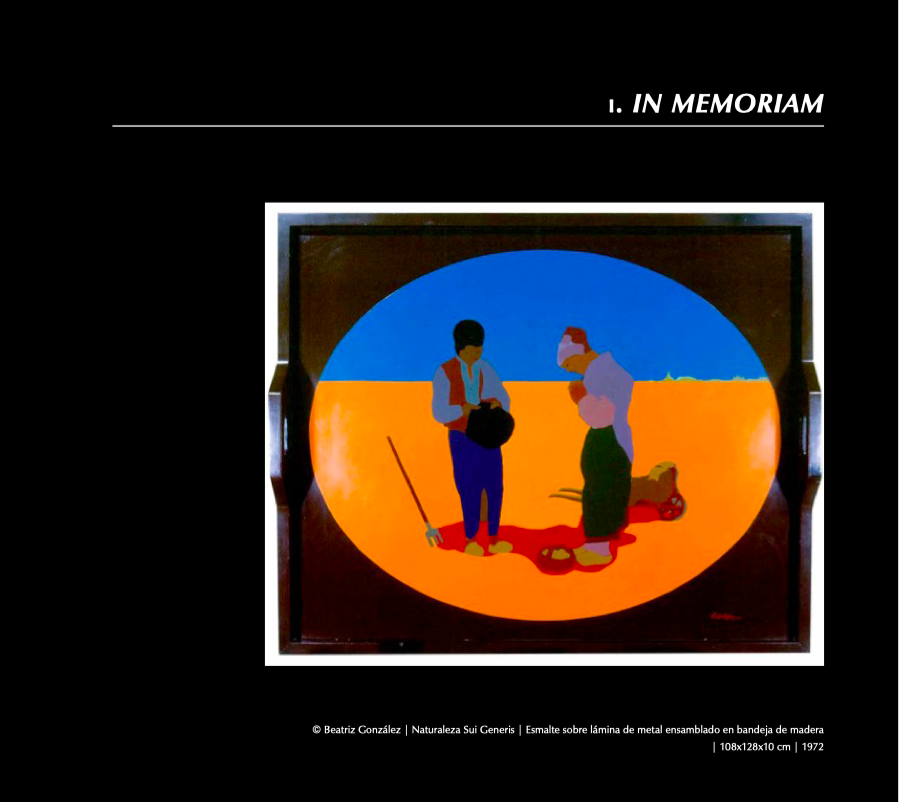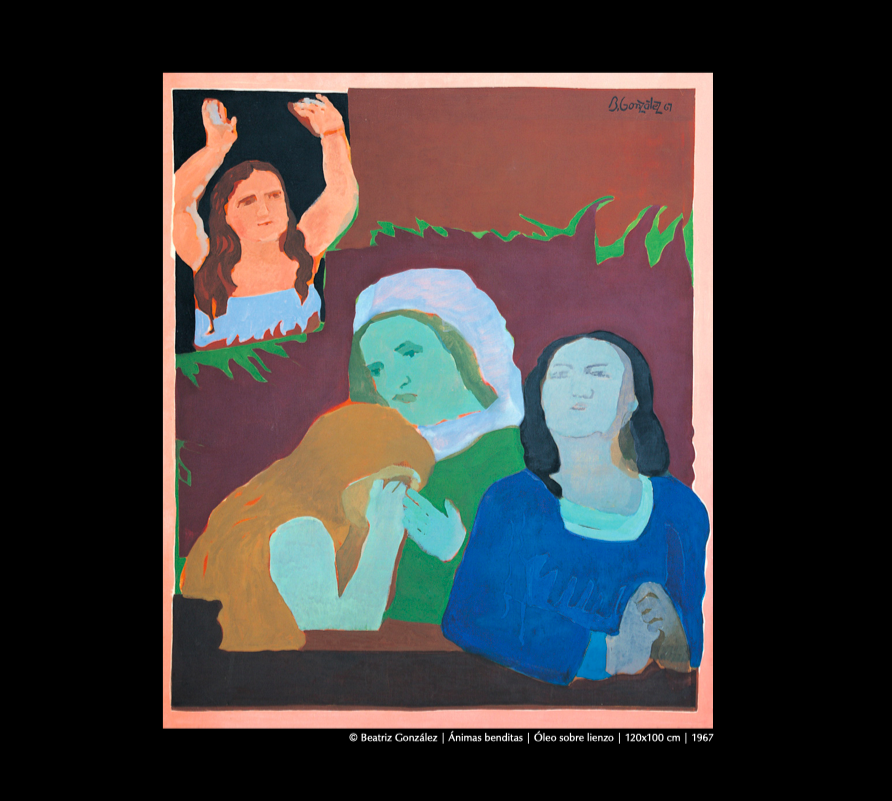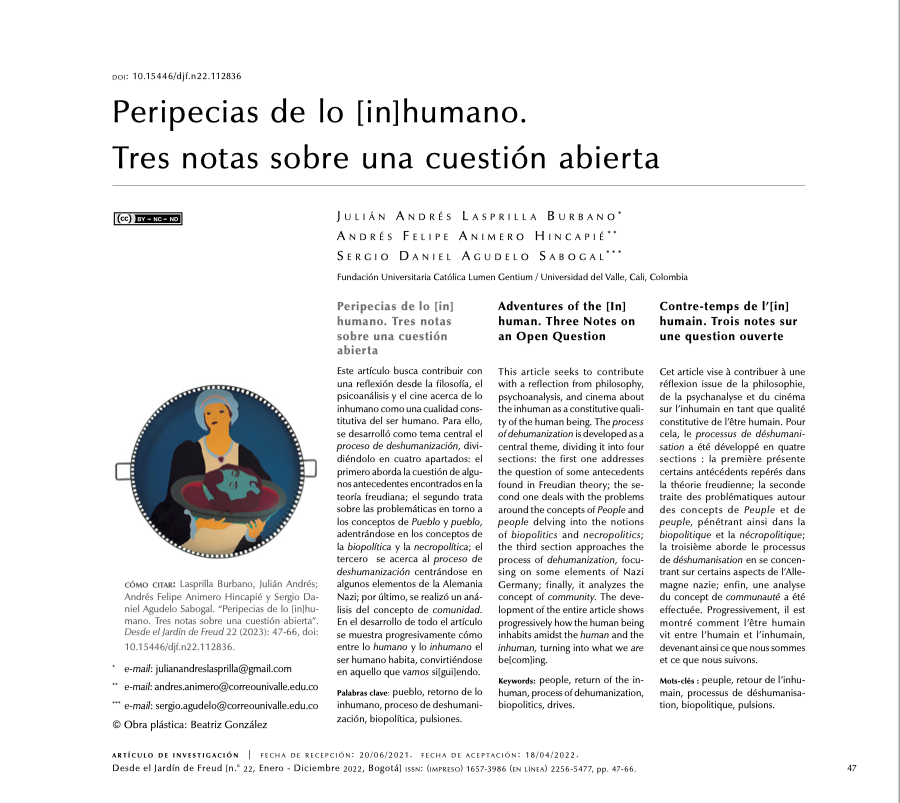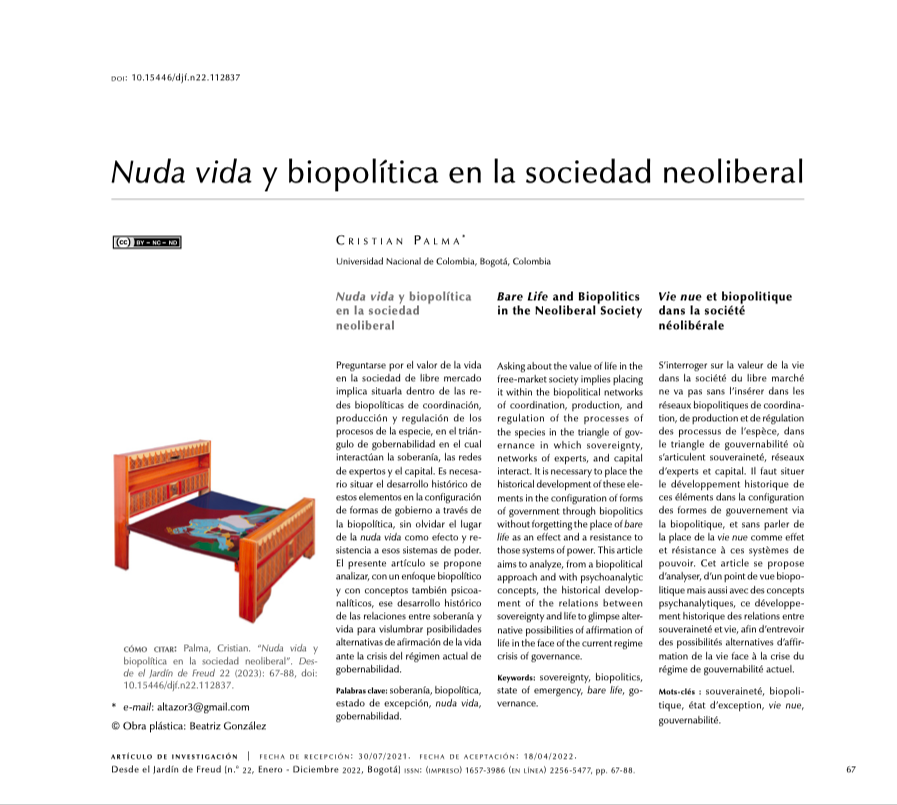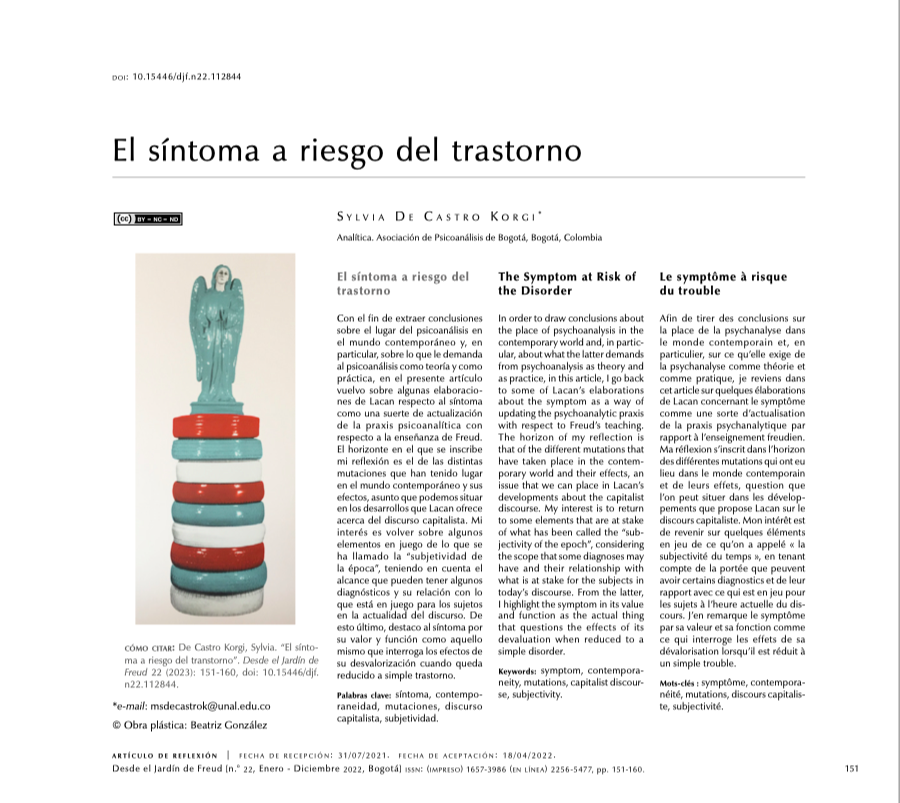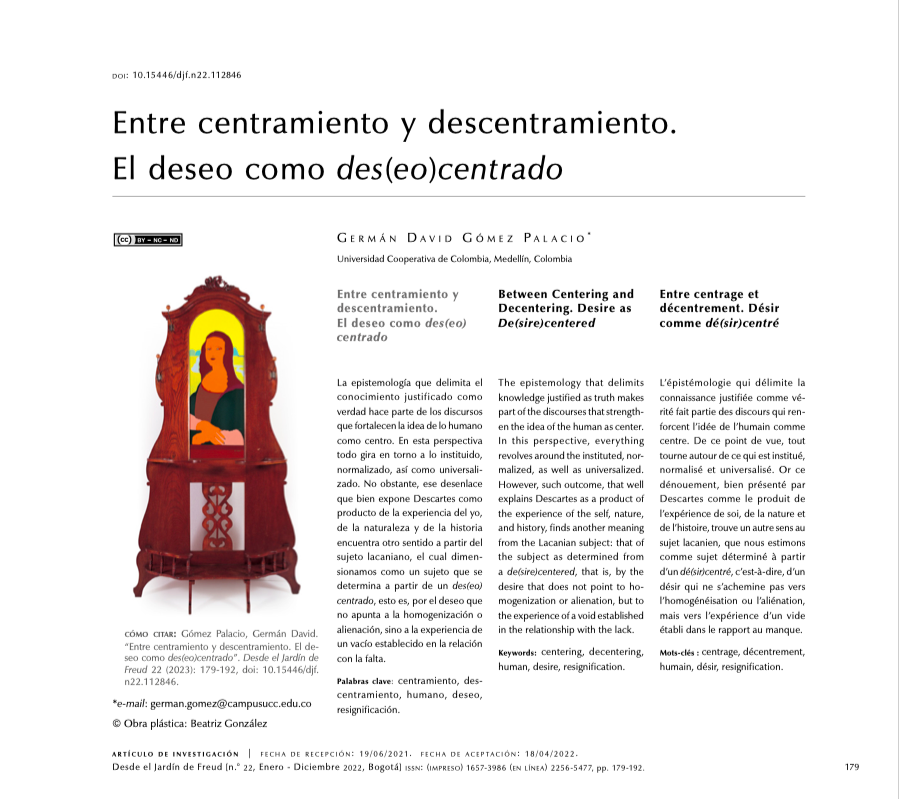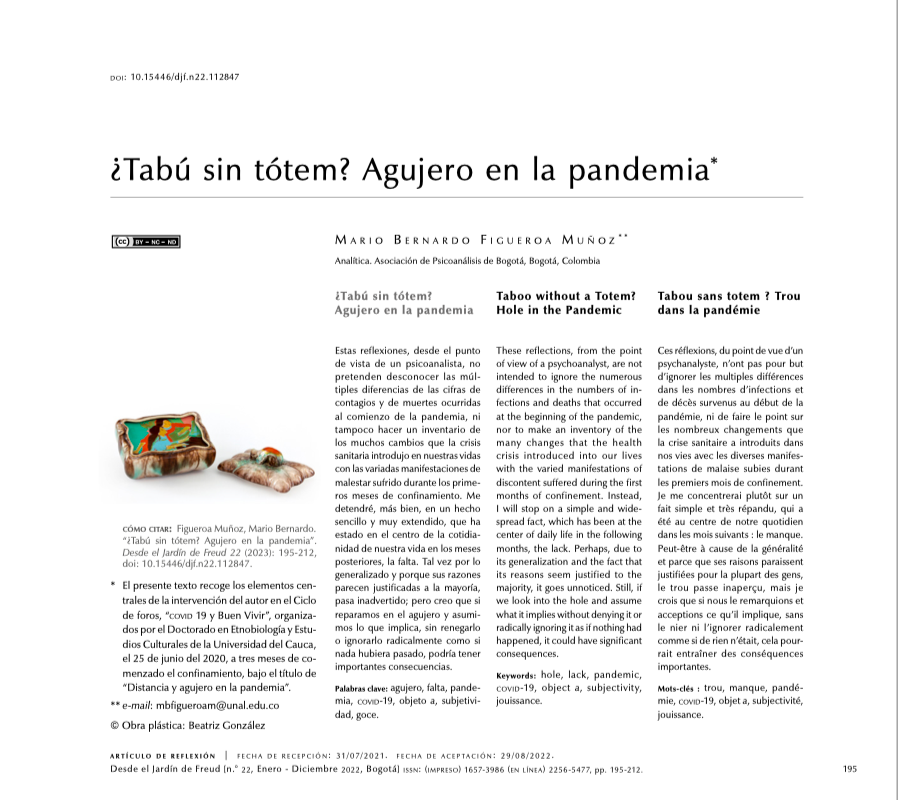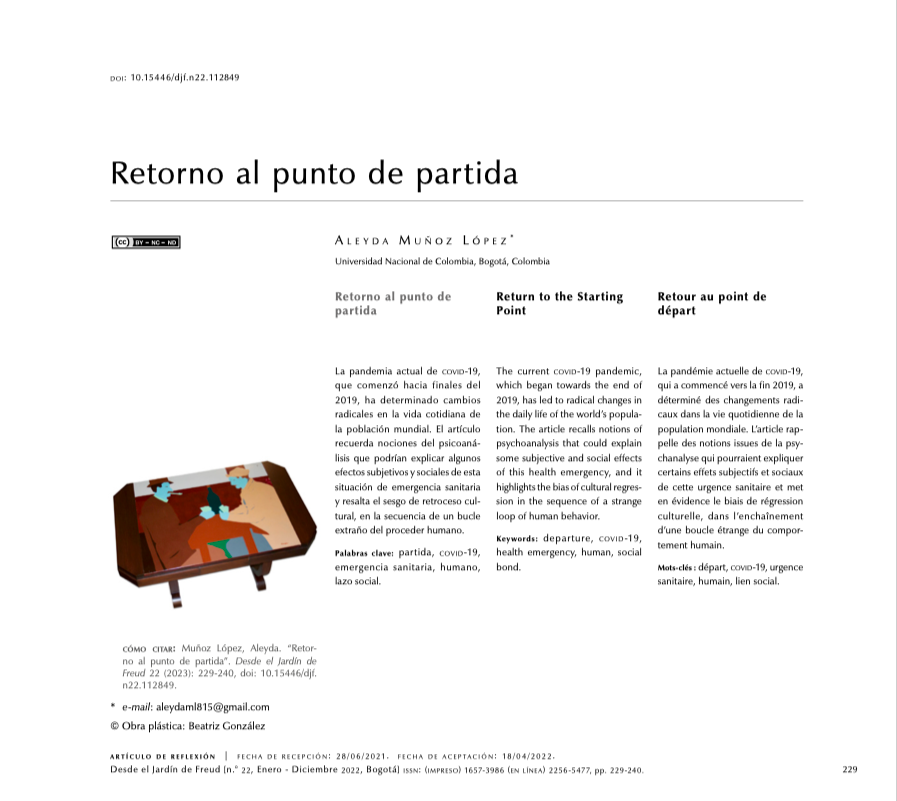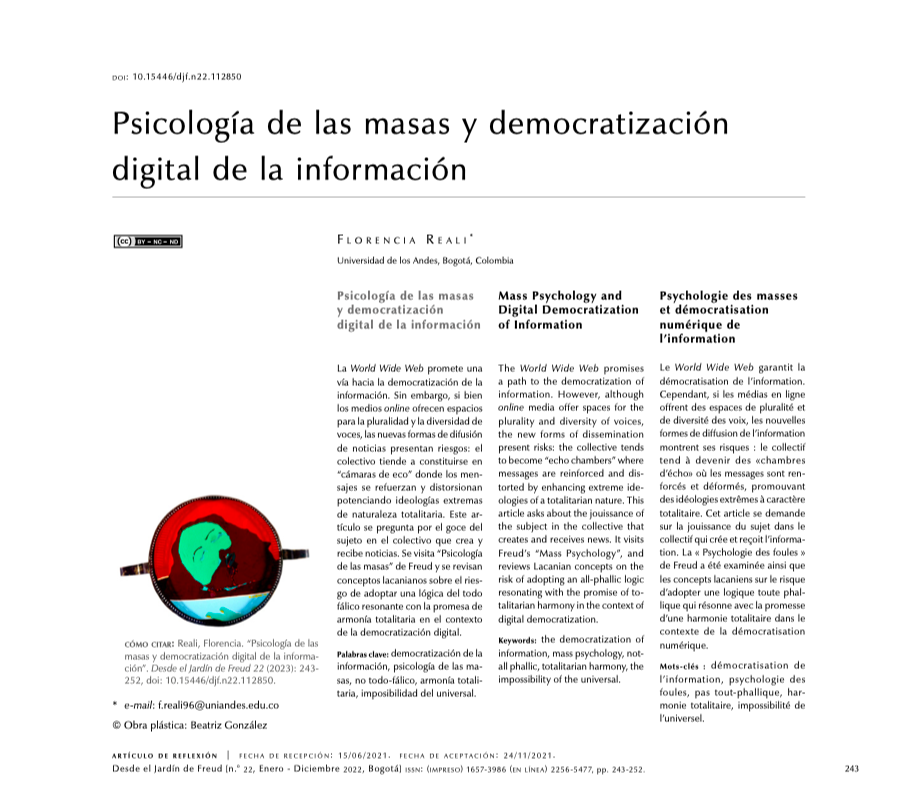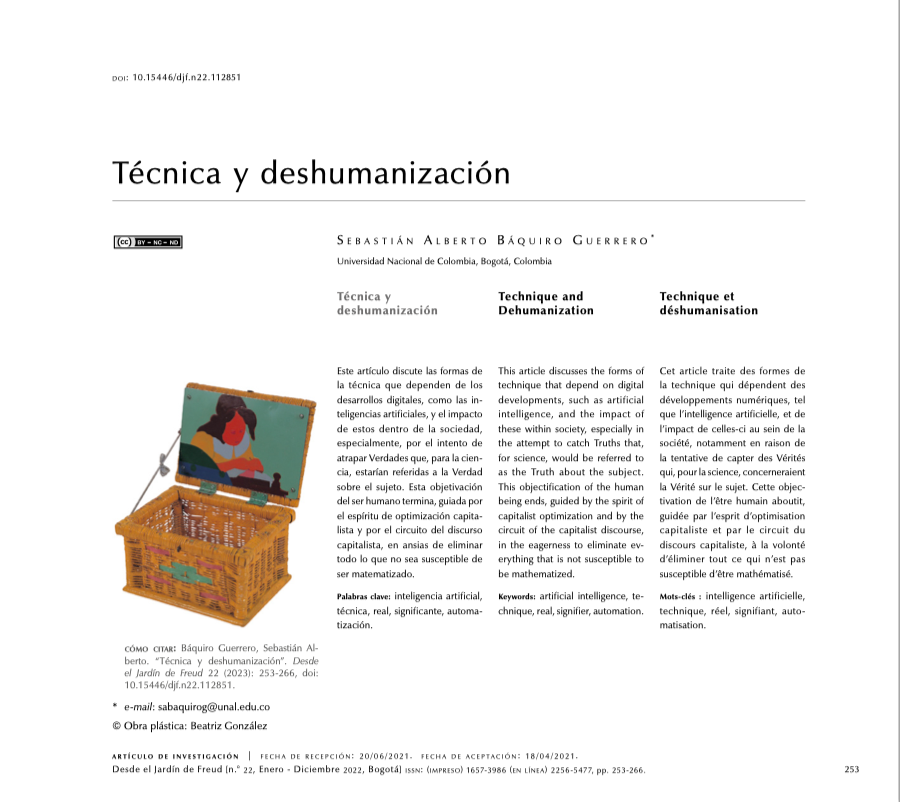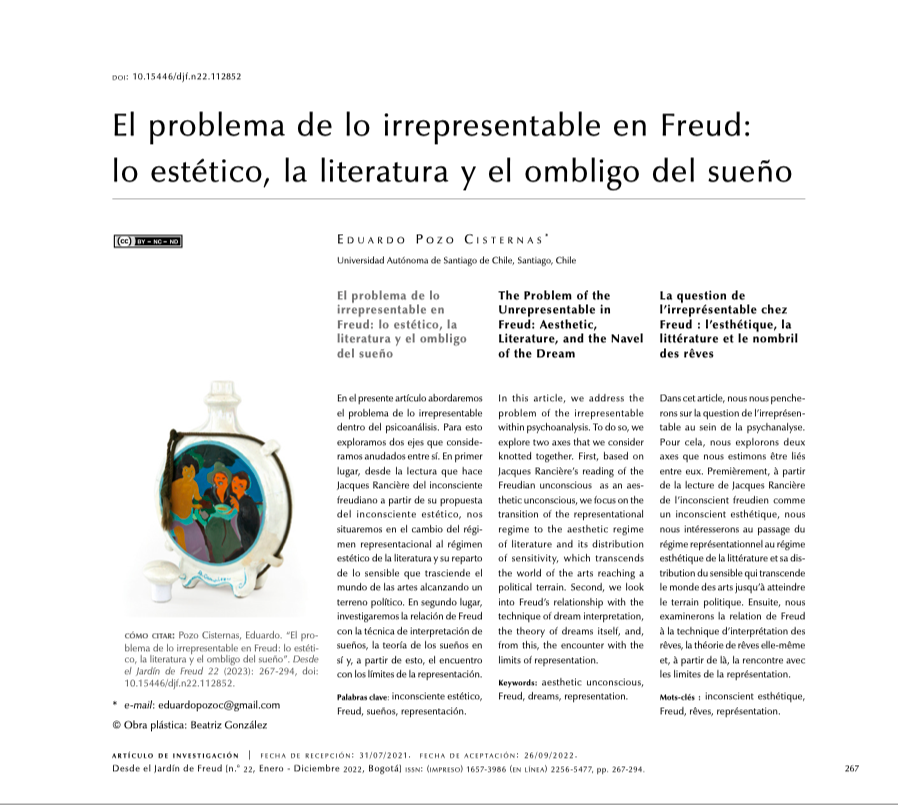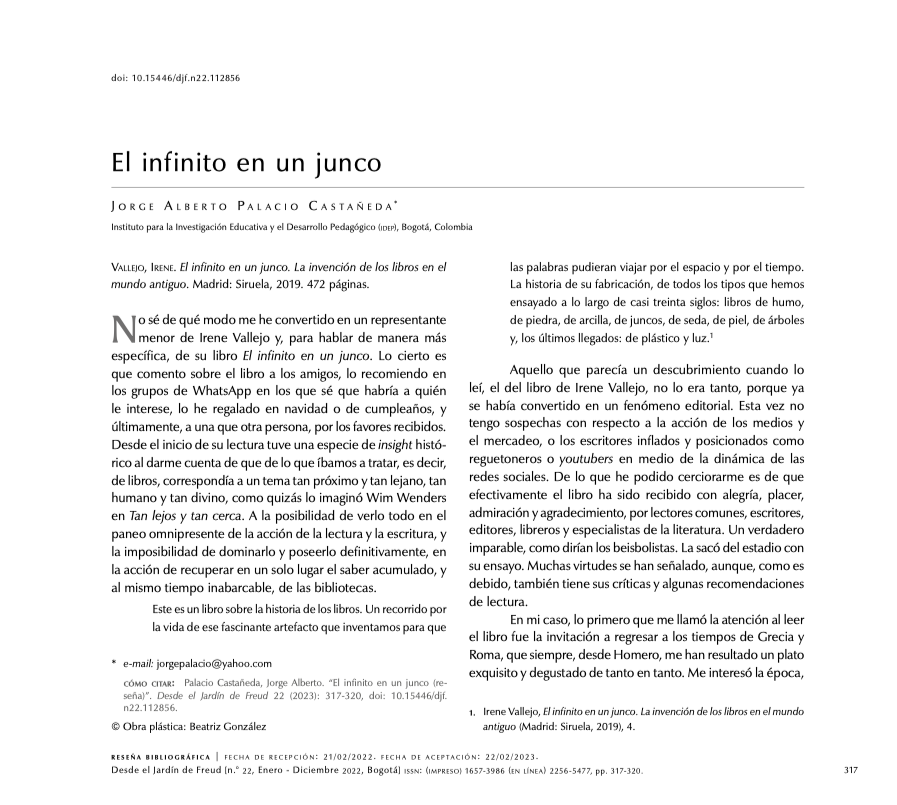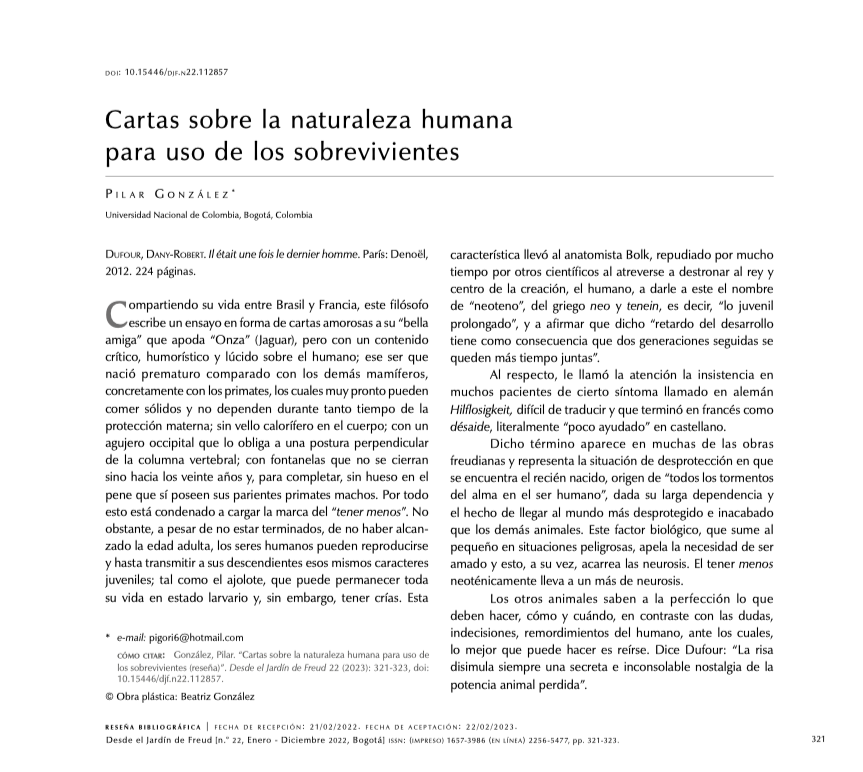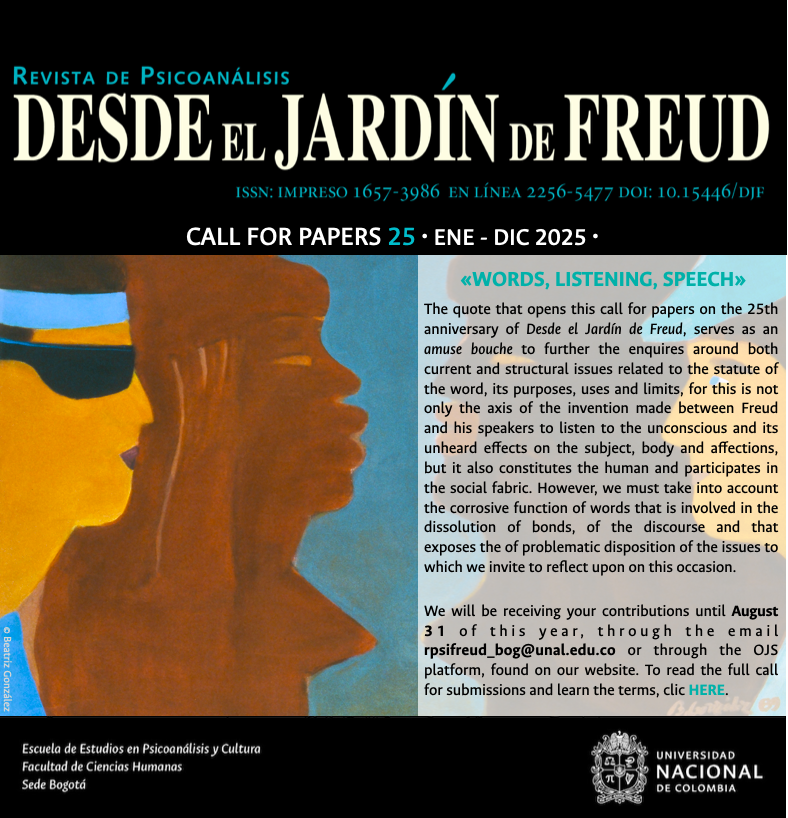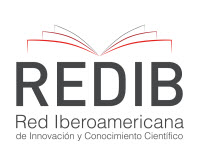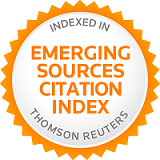About the Journal
Desde el Jardín de Freud, Revista de Psicoanálisis is an annual publication of the School of Psychoanalysis and Culture Studies at the National University in Bogotá, Colombia, whose purpose is to publish previously unpublished, peer-reviewed articles, in which authors set forth the results of academic research, clinical practice, and reflexion, as a contribution from psychoanalysis to the debate and explanation of phenomena found at the juction of the subject, the unconscious, and culture. The journal's articles relate the three fundamental aspects of theoretical elaboration, clinical inquiry, and reflexions regarding social links. The journal is monographic in nature, and subject matters are chosen on the basis of relevance and currency. The journal also counts on texts by specialists in disciplines, with which psychoanalysis maintains interesting exchanges, and it includes a literary anthology on the monographic theme, whose importance lies on the value that psychoanalysis recognizes in those products; in the same vein, the journal's pages are illustrated with works by important Colombian artists.
Desde el Jardín de Freud is targeted to psychoanalists, academicians of diverse disciplines interested in the phenomena that lie at the psychoanalysis-subjectivity-culture junction, and of course also to the casual reader who is interested in the subject matters offered.
Our publication is indexed in: Academic Keys - Academic Journals, Academic Search Premier, BIBLAT, CIRC, CLASE, Dialnet, DOAJ, EBSCO Host, EBSCO Discovery Service, Emerging Sources Citation Index, EZB - Elektronische Zeitschriftenbibliothek (Electronic Journals Library), Fuente Académica Plus, Google Scholar, Journal Scholar Metrics - España, Latin America & Iberian Database, LATINDEX (Directorio y Catálogo), MIAR, ProQuest Central, ProQuest Central K-12, REBIUN, LatinREV, REDIB, Research Library, Ulrich's Periodical Directory and Biblioteca virtual Luis Ángel Arango.
The Journal Desde el Jardín de Freud is also part of the Online Network of Journals of Psychoanalysis.

Available Issues
Desde el Jardín de Freud 1 (2001): "What is written, is written. Writing, letter, and the unconscious"
Desde el Jardín de Freud 2 (2002): "Contemporary bodies and pleasures"
Desde el Jardín de Freud 3 (2003): "How do I fit in there? The dispute over the object in the social bond"
Desde el Jardín de Freud 4 (2004): "Memory, forgetfulness, forgiveness, revenge"
Desde el Jardín de Freud 5 (2005): "Responsibility of the subject, clinical guilt, and impunity"
Desde el Jardín de Freud 6 (2006): "The feminine and the social"
Desde el Jardín de Freud 7 (2007): "Drugs, clinical and the market"
Desde el Jardín de Freud 8 (2008): "The voice in social bonds"
Desde el Jardín de Freud 9 (2009): "Acts"
Desde el Jardín de Freud 10 (2010): "Sigmund Freud"
Desde el Jardín de Freud 11 (2011): "Our duels"
Desde el Jardín de Freud 12 (2012): "The question of the symptom"
Desde el Jardín de Freud 13 (2013): "Conflict, segregation, exclusion"
Desde el Jardín de Freud 14 (2014): "Horror and indifference"
Desde el Jardín de Freud 15 (2015): "Structure of the subject and contemporary social bond"
Desde el Jardín de Freud 16 (2016): "Truth and its effects"
Desde el Jardín de Freud 17 (2017): "The uses of humor, jokes, and the comic in clinical practice and social bonds"
Desde el Jardín de Freud 18 (2018): "Religion and the return of the real"
Desde el Jardín de Freud 19 (2019): "Hatred"
Desde el Jardín de Freud 20 (2020): "Calculations of discourse: the unconscious in politics"
Desde el Jardín de Freud 21 (2021): "Obedience, indignation, uprising"
Desde el Jardín de Freud 22 (2022): "The risk of the human" (current)
Desde el Jardín de Freud 23 (2023): "The animal looks at me" (In editing)
Desde el Jardín de Freud 24 (2024): "Love" (Closed call. In the text evaluation phase.)
Desde el Jardín de Freud 25 (2025): "Words, listening, speech" (Open call)
Announcements
Current Issue
No. 22 (2022): «THE RISK OF THE HUMAN»
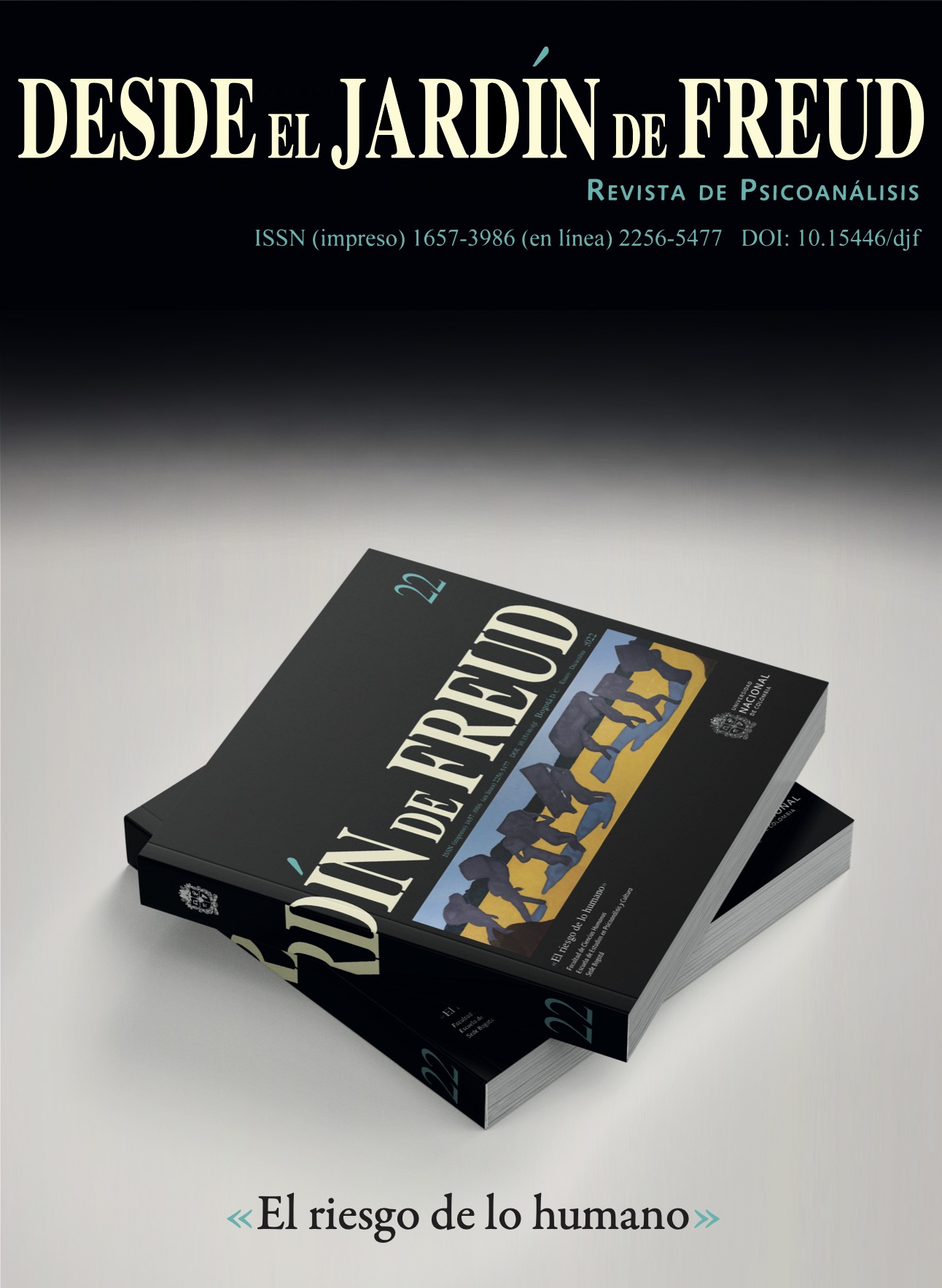
If the objects with which we have surrounded ourselves to make existence more bearable suffocate to the point that these are the ones that govern us now and those that set our course of possibilities and limits, can psychoanalysis shine its flashlight to warn if that is the case? How could we be throwing the child out with the bathwater? But, in order not to neglect the insufficiency contained in mere denunciation, we wanted to take this consultation to such a point that it is necessary to ask psychoanalysts if they have anything to propose. When Lacan faced the request of the students of the turbulent 1960s, who requested clarifications to better support their spontaneous opposition to the political and economic regime, he responded with the writing of the four speeches that form a social bond and assured them that these structures could go down to the streets. This was indigestible given the pressure of time. Today, when psychoanalysts have examined psychoanalytic discourse in a thousand ways, when they have noticed its relationship with the discourse of the master, and when they have been able to repeatedly confirm in the clinic the ravages of capitalist discourse, ravages that fall on desire and castration, In the symptom and in the enjoyment, in the social bond and in otherness, can it be said what the analyst's discourse could contribute to the opening of routes of social bond without detriment to the risks that humanity imposes?
The notion of risk assumes that human action has generated the phenomena we face, phenomena that could also be avoided through the same action, which would frame this in what would not be necessary, but not impossible either. We live in a society at risk, sociologists have affirmed since the mid-1980s, which has allowed them to highlight the paradoxes that instrumental technical development entails: “the control of nature makes the control of nature impossible”; and, in terms of the relationship between science and politics, the idea that the certainties that science provided in place of religion quickly crumble, with which, furthermore, the swarm of returning religions advances by leaps and bounds, as time precisely to occupy the empty space left by current discourse by dispensing with all otherness. This is also of crucial importance for psychoanalysis in its insistence on the category of Other, beyond the imaginary othernesses in which it gets lost.
Between optimists and pessimists, between the “intelligence of pessimism” and the “optimism of happiness”, perhaps it is time that gives greater urgency to the question of the risk of what is human. Time, eminently human, if we still experience it, seems to collapse today, and with it, the subject himself, lost among countless objects of which he himself is a part.



